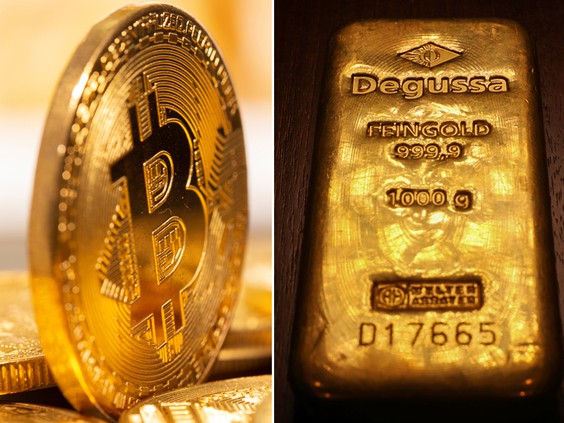PHOTO BY DADO RUVIC/REUTERS ILLUSTRATION, LUKE MACGREGOR/BLOOMBERG
When it comes to blockchain, 2020 was the time of decentralized money where the remainder of the world was grasped by fears of Covid, blockchain got the bug of decentralized account, with crypto devotees hotly “fomo-ing” on loaning conventions, getting stablecoins and mining liquidity. DeFi, for short, ruled the discussion for most of the year, gathering speed in February as the Total Volume Locked (TVL) in the area previously outperformed $1 billion. The figure, which speaks to the dollar estimation of resources secured DeFi conventions, finished off the year above $13 billion, showing 2,000% development since January. The TVL is only one marker that DeFi had a milestone year. Glancing back at a portion of the huge patterns of 2020 offers hints with regards to what comes straightaway and what patterns may overwhelm blockchain in 2021.
Ethereum’s contribution:
The Ethereum network should be essential for any discussion about DeFi. Ethereum upheld the DeFi area practically without any help in 2020, with the breaks appearing for quite a bit of it. Exchange times eased back extensively, while normal expenses soared from a couple of pennies toward the beginning of the year to well above $12 in September. Versatility has regularly been the worst thing about blockchain and in DeFi, it appears to have discovered the ideal tempest. The possibility that DeFi is for everybody strains credulity when just moving tokens around costs somewhere in the range of $5 to over $30. Consequently, cross-chain innovation will be among the greatest accounts of 2021. Cross-chain innovation permits resources from one blockchain to be spoken to on another, and for the weight of the DeFi area to be all the more equally spread across numerous chains. Matic is among the numerous ventures which have been dealing with a sidechain for Ethereum, while others have been taking a gander at more expansive going arrangements. Universe and Polkadot are both endeavoring to make an organization of autonomous yet interoperable blockchains like Kava. Polkadot was as of late named “the Ethereum blockchain executioner” in a piece by Bloomberg. While engineer revenue in Bitcoin and Ethereum has declined, in the a year finishing off with May, Polkadot’s “cutting edge organization” saw a 44% ascent in dynamic designers. With more than 250 ventures currently expanding on Polkadot, it adds further weight to the possibility that cross-chain interoperability has a brilliant future in front of it. No ifs, ands or buts, the greatest furor to grasp blockchain in 2020 was liquidity mining. Liquidity mining, otherwise called yield cultivating, is a boost conspire that urges crypto resource holders to secure their tokens decentralized organizations. This viably bootstraps the convention, giving the important liquidity needed to it to work. Liquidity mining turned out to be large information in June when loaning stage Compound dispatched its COMP administration token. Banks and borrowers on Compound got qualified for day by day circulation of COMP tokens, and as the cost of these tokens expanded, so did the prizes. Compound effectively made a token monetary model that abundantly compensated banks and even made it conceivable to benefit from getting. This was before long reproduced across the DeFi area, with Balancer joining Compound among the large parts around there. Yield cultivating immediately acquired such quick prominence and force that it appeared as though an air pocket was quickly framing. Not every person who surged in to cultivate those sweet yields and outsized returns wound up in benefit, as neglecting to peruse the important part prompted not exactly attractive outcomes. While liquidity mining never fully bubbled over and the air pocket never popped, it didn’t make victors of every individual who partook. One year from now, hope to observe more robotized yield ranchers, for example, Yfarmer and Yearn.Finance. Both endeavor to demystify the market and make it easier for passage level players to take an interest. Indeed, even as the idea of decentralized money grabs hold, one of the enormous patterns in 2021 will be arrangements that endeavor to bring everything under one pennant. This accumulation will permit numerous decentralized conventions to be controlled from one dashboard, with the guarantee of improving the client experience drastically. Plasma.Finance is among the organizations endeavoring to additional this vision, joining their DeFi aggregator in Plasma.Finance with banking administrations under their PlasmaPay pennant. Business visionary asked Ilia Maksimenka, the CEO of Plasma, regardless of whether DeFi is in a situation to contend with the customary financial area in 2021. “At the point when we take a gander at the administrations DeFi can offer, we as of now have arrangements that by and large are similarly tantamount to, or shockingly better than, customary banking,” Maksimenka said. “DeFi is profoundly serious, yet the client experience is regularly too perplexing or ailing in some other respect. That is something we need to deal with as an industry on the off chance that we truly need to support selection.”
Stability of coins:
Another zone inside DeFi having a marquee year was the stablecoin market. The stockpile of stablecoins has now moved past $26 billion, with $20 billion in stablecoins being added to the market throughout the span of the year. Tie USDT is as yet the significant part in the market with around 79% market predominance, and with Circle USDC being one of the other significant figures, the U.S. dollar actually rules in the stablecoin market. As the area develops and with the macroeconomic impacts of government boost bundles still to be felt, it is possible that other fiat-fixed stablecoins start to eat into that piece of the overall industry. Thinking back on 2020, unmistakably decentralized account has had an incredible year. It was simply the year DeFi immovably declared to the more extensive blockchain local area and started to make its essence felt. 2021 could end up being more prominent still for the early area, and as the cost of Bitcoin floods past $23,000, there are a lot of explanations behind DeFi and crypto devotees wherever to look forward with a feeling of fervor and idealism.











